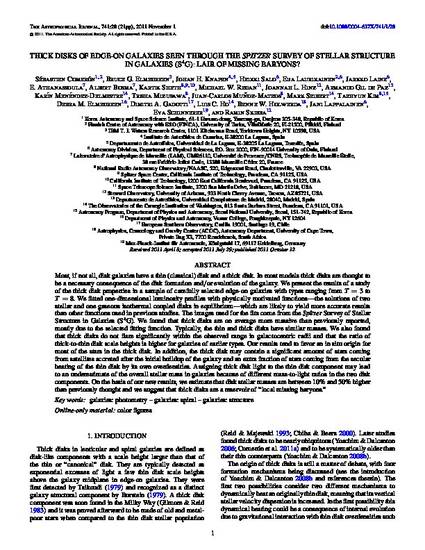
Most, if not all, disk galaxies have a thin (classical) disk and a thick disk. In most models thick disks are thought to be a necessary consequence of the disk formation and/or evolution of the galaxy. We present the results of a study of the thick disk properties in a sample of carefully selected edge-on galaxies with types ranging from T = 3 to T = 8. We fitted one-dimensional luminosity profiles with physically motivated functions—the solutions of two stellar and one gaseous isothermal coupled disks in equilibrium—which are likely to yield more accurate results than other functions used in previous studies. The images used for the fits come from the Spitzer Survey of Stellar Structure in Galaxies (S4G). We found that thick disks are on average more massive than previously reported, mostly due to the selected fitting function. Typically, the thin and thick disks have similar masses. We also found that thick disks do not flare significantly within the observed range in galactocentric radii and that the ratio of thick-to-thin disk scale heights is higher for galaxies of earlier types. Our results tend to favor an in situ origin for most of the stars in the thick disk. In addition, the thick disk may contain a significant amount of stars coming from satellites accreted after the initial buildup of the galaxy and an extra fraction of stars coming from the secular heating of the thin disk by its own overdensities. Assigning thick disk light to the thin disk component may lead to an underestimate of the overall stellar mass in galaxies because of different mass-to-light ratios in the two disk components. On the basis of our new results, we estimate that disk stellar masses are between 10% and 50% higher than previously thought and we suggest that thick disks are a reservoir of “local missing baryons.”
Comeron, Sebastien, et al. "Thick Disks of Edge-on Galaxies Seen Through the Spitzer Survey of Stellar Structure in Galaxies (S4G): Lair of Missing Baryons?" 2011. The Astrophysical Journal 741(1): 21 pp.

© 2011. The American Astronomical Society. All rights reserved.
https://doi.org/10.1088/0004-637X/741/1/28